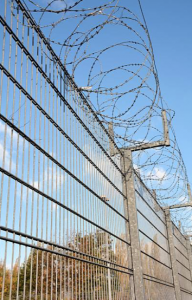 “The costs of criminal activity are unacceptably high, but the reforms supported by the president promise to reduce costs and cut down on recidivism.”
“The costs of criminal activity are unacceptably high, but the reforms supported by the president promise to reduce costs and cut down on recidivism.”
Criminal Justice reform: We can improve expensive, ineffective system by lowering recidivism
Jared Kushner and Tomas Philipson
As published in USA Today
November 19, 2018
Crime imposes substantial fiscal and social costs on the United States. In 2016, more than 1.4 percent of our Nation’s GDP was spent funding the State and Federal criminal justice system. Victims and society at large also bear significant costs through pain, suffering, reduced quality of life, property losses, increased medical costs, and loss of life. The most recent estimates from 2014 indicate that altogether these damages constitute an additional 1.5 percent of GDP, yielding a total burden of 2.9 percent of GDP, or roughly $500 billion.
These costs can be attributed, in part, to crimes committed by prisoners after already serving once in prison, through recidivism after being released from state and federal facilities. If recent trends hold, almost half of federal inmates who were conditionally released will be re-arrested within 5 years of release and more than 75 percent of state offenders who were released on community supervision will be re-arrested within 5 years of release.
The president is reducing spending, crime
To break this cycle, President Donald J. Trump is working to effect bipartisan and evidence-based prison reforms to reduce recidivism. He issued an executive order in March that is bringing together more than a dozen Federal agencies to identify ways to reduce recidivism, enhance the reentry process, and improve public safety.
The administration also worked with Congress to draft the FIRST STEP Act, legislation which seeks to strengthen recidivism reduction and evidence-based reentry programs for inmates in federal prisons. We continue to work with the law enforcement and faith and business communities to find ways to get people leaving prison properly reintegrated into society.
While these reforms have proven to reduce crime, they also lead to reductions in the costs associated with corrections operations in general. The most damning fact about the ineffectiveness of our current prison system is that only 24 percent of the current federal prison population is being incarcerated for the first time. By lowering the rate of recidivism, we can apply a broad-based approach to preventing future crimes and cutting prison costs over time.
These reforms help former prisoners transition back into society. As the president said at the White House Prison Reform Summit in May, one of the most important things we can do is to create a great economy and a good work environment for all Americans, including former prisoners. Thanks in part to the administration’s pro-growth policies, the economy is booming and the unemployment rate is the lowest it has been in nearly 50 years. To continue this strong trend of economic growth, we need a capable workforce to fill available jobs. In 2014, around 6 percent of working-age males had been incarcerated at some point in their lives. However, a study found that the unemployment rate among them is 27 percent, which is close to the general unemployment rate around the Depression. It is paramount that we help prisoners who are motivated to live law-abiding lives become more employable so that they can contribute to society after they are released.
Investing in prisons benefits the American public
A recent analysis from the President’s Council of Economic Advisers (CEA) found that certain prison programs not only reduce crime, but also lower overall prison spending by reducing the costs associated with prison reentry. CEA estimates that mental health or substance abuse treatment may reduce the burden of crime and long-term incarceration costs by up to $5 for every $1 invested by taxpayers. Further, those who return to use of illegal drugs after prison are at risk of a fatal overdose due to the presence of fentanyl and other dangerous synthetic opioids in our drug supply. CEA also found great variation in effectiveness across programs, which suggests reallocating spending from poorly performing programs to higher performing ones could cut recidivism and taxpayer spending at the same time.
Despite these positive returns, there are many programs, such as in education, where the evidence is less conclusive and merits further exploration. There is some evidence to suggest that more educated prisoners are less likely to become recidivists. For example, those who have not completed high school have a 60 percent chance of re-incarceration, while college graduates have a 19 percent chance.
Government investment in prison education can be viewed as an extension of existing public investments — much like public investment for higher income populations through publicly financed schools, universities, and student loans — that build human capital elsewhere in our economy.
The bipartisan reforms supported by the president are an important broad-based approach that will, hopefully, benefit not only prisoners, but also the American public. This White House recognizes that fiscal and human costs of criminal activity are unacceptably high. Through our efforts to break the cycle of crime and reduce recidivism, we can assist more people to contribute to our society rather than be a burden to our great country.
Jared Kushner is a senior advisor to the president, and Tomas J. Philipson is a member of the President’s Council of Economic Advisers.






